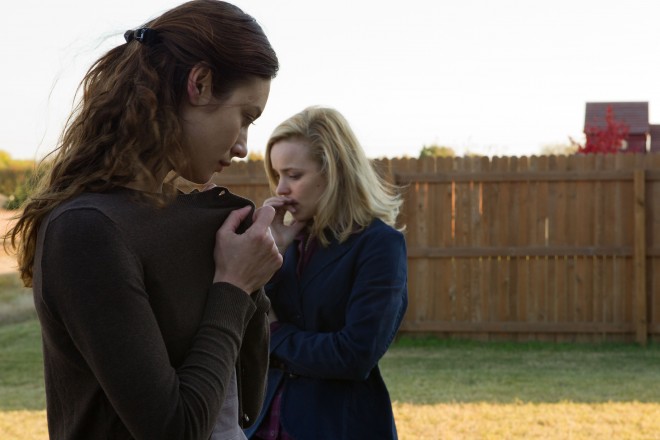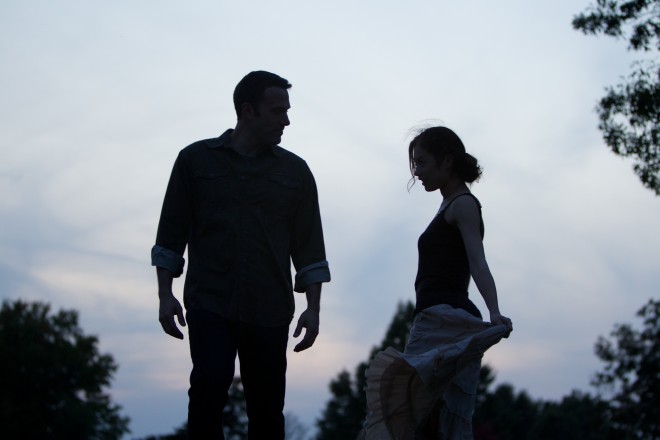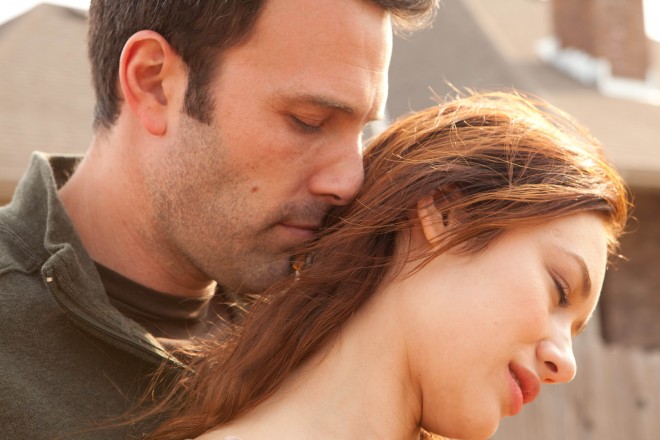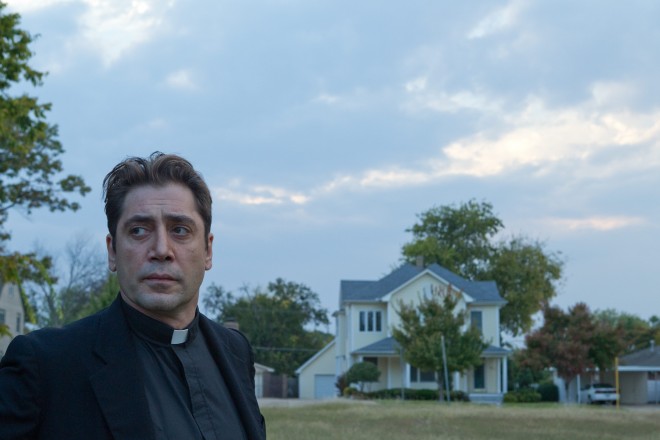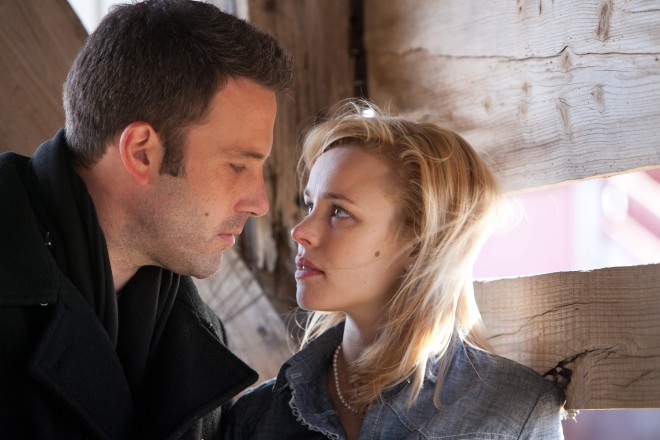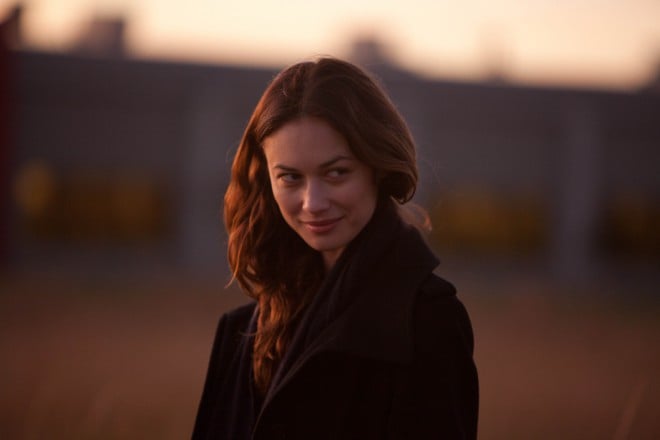Major Tom to Ground Control: ‘Oblivion’ and ‘To the Wonder’
Olga Kurylenko seduces Cruise and Affleck in two odysseys that are all about the visuals
Share

Wonders never cease. This week we have two new movies that are out of this world. By that, I mean they’re not of this world. They are cosmic odysseys, to opposite destinations.
After bombing as Jack Reacher, Tom Cruise bounces back as Jack Harper in Oblivion, a space opera that’s got more going for it than the title suggests. Also opening this week is To The Wonder, the latest transcendental opus from Tree of Life’s Terrence Malick. Oblivion is a blockbuster sci-fi spectacle with a labyrinthine plot. To the Wonder is an almost plotless meditation on spirituality, the beauty of dust motes and the quiet desolation of the American Dream. Both are visually enchanting but in utterly different ways—Oblivion is a remarkable feat of computer-graphic design; To the Wonder tries to photograph the tangible divinity of natural light. Strangely, they both feature rising star Olga Kurylenko, the Ukranian-born model and Bond girl (Quantum of Solace).
I interviewed Kurylenko at TIFF last year. For an otherwordly beauty she’s also something of a rocket scientist: an intelligent, cultivated artiste who speaks English, French and Russian fluently.
But in To the Wonder, she doesn’t get to do much talking—Malick’s not big on dialogue. And in Oblivion, she barely gets a chance to act: her most expressive moment comes in her first few seconds onscreen, when she awakes, gasping and coughing, from a 60-year “delta sleep” in a NASA space pod. As for Cruise, he keeps his head down and the gets the job done.
Cast as a top-gun space jockey, Tom Cruise does what he was put on Earth to do: move fast, look intense and save the world—while stripping off his shirt every now and then to show he still pays his dues at the gym, not just the Scientology center.
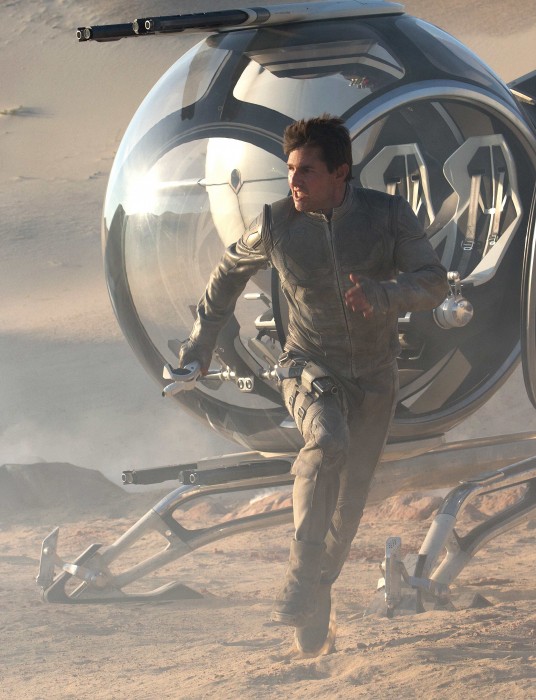
The movie comes from writer-director Joseph Kosinksi (Tron: Legacy), who based it on his own unpublished graphic novel. It sails along as a savvy pastiche of the entire space/pop culture universe. Oblivion is a microfiber composite of 2001: A Space Odyssey, Star Wars, Star Trek, Alien and The Matrix—and no doubt many less obvious elements of the canon that only fanboys will catch.
It’s another day in dystopia. The story is set post-apocalyptic 2077. Earth is a total wreck. The planet has apparently been ravaged by an alien force that has blown up our moon (the nerve!), and unleashed a host of cataclysmic tides, winds and sands. As Jack (Cruise) spells out in an opening voice-over, “We won the war but we lost the planet.” Most of humanity has evacuated Earth and holed up on the Saturn moon Titan.
Jack is stationed back on Earth, as a kind commando repairman, fixing broken security drones and keeping the water extraction rigs humming. He’s shacked up in a space age penthouse with his navigator/lover Victoria (Andrea Riseborough), who’s dying to get out of Dodge and live the high life on Titan. But Jack is busy fending off savage bands of “scavs” (scavengers) that roam the ruins like Mad Max refugees. And he’s being stalked by one of their leaders, Beech (Morgan Freeman), who looks like a black-feathered Darth Vader. After Jack rescues a mysterious astronaut from a 60-year-old NASA mission (Kurylenko)—honey, I’m home, and take a load of this sleeping beauty space babe I found in a pod—a sticky triangle quickly takes shape. From the space station the sky, a nosy Big Sister figure named Sally (Melissa Leo), keeps asking Victoria, “Are you still an effective team?” as if to say, “Are you happily married.” She always says “yes,” but we know this can’t last.
Jack is a natural born renegade, who likes to go off the grid and retreat to an idyllic cabin on a lake in a mountain paradise that has somehow escaped the environmental havoc that buried the Empire State building in black desert, among other things. The kind of place that would appeal to Robert Redford. It would be unfair to reveal more of the plot, which starts turning somersaults before the end of the first act and eventually disappears up its own black hole. No matter. What makes Oblivion compelling is the spectacle, not the script. I’m not sure how much the IMAX projection I saw had to do with it (thankfully it was not in 3D), but I can’t remember the last time I was so exhilarated by computer-generated imagery in an action movie. Not the battles, which are relatively generic. What’s impressive about the film is the sheer elegance of its visual design. Also the pacing is less hectic than in most action movies, without the typical eyeball-frying marathons of fast-cut chaos. I don’t mean it’s narcotic, à la Space Odyssey, but there’s ample time to sink into the screen’s spatial geometry, which is persistently ingenious.
Just when you thought it was too late to go back to the future.

In To the Wonder, Olga Kurylenko again has the upper hand in a love triangle. She plays a French woman named Marina who romances Neil (Ben Affleck) in Europe, and comes home to America with him, where Neil reconnects with an old flame named Jane (Rachel McAdams). But the competition seems grossly unfair. Although McAdams adorns the movie’s poster, her role seems to have gotten lost in the sun-dappled rabbit hole of Malick’s cosmic reverie. She has precious little screen time. The camera, however, dotes on Kurylenko, who has an unlimited license to dance, daydream and find the light.
If Oblivion suffers from too much plot, To the Wonder has too little. It eludes narrative with such perverse whimsy it could be called . . . Oblivion. It’s as if Malick has the made a movie that might take place in between everything that might happen in a scripted movie. Not that there’s anything wrong with that. I do admire the concept of dramatizing the spaces, looking for what Leonard Cohen calls “the crack where the light gets in.” But arriving two years after The Tree of Life—which was fabulous and had the ballast of an ambitious, albeit buried, narrative—To the Wonder‘s scenario threatens to become a hermetic montage of Malick tropes. All divine energy without the gravitas of the dark matter.
That, at least, is what I remember from seeing the film amid the frenzy of TIFF some six months ago. I’d like to see it again. As a fan of Malick, I owe him that much. And after riffling through the movie’s press kit, I wonder if maybe there’s more story to To the Wonder than I saw. I never do this, and I know it’s the lazy way out, but here are some morsels of the press kit’s elaborate synopsis. Relax, there are no spoilers:
“Neil, an aspiring writer, has left the United States in search of a better life, leaving behind a string of unhappy affairs. . .
Marina, quiet and beautiful, with flashes of a mischievous humor, is divorced and the mother of a 10-year-old daughter, Tatiana. At 16, Marina left the Ukraine for Paris without a cent to her name. There, she married a Frenchman who abandoned her after just two years, leaving her alone with Tatiana in a studio apartment. Marina was forced to work a variety of temporary jobs to make her way. Having nearly given up hope, Marina is overcome with joy to be in love with Neil, her salvation from an unhappy future. Two years later, Neil and Marina are living in a small town in Oklahoma, close to where Neil grew up. Neil, having given up his hopes of becoming a writer, has taken a job as an environmental inspector. Neil is happy with his work, but his love for Marina cools as she, for her part, is frustrated by the holding pattern she feels she is in with Neil. . . Seeking advice, Marina turns to another exile in the community, a Catholic priest named Quintana [Javier Bardem] . . . Neil reconnects with Jane, an old friend . . .Neil’s entanglements with the two women in his life, and Father Quintana’s struggle with his
faith, force them both to consider different kinds of love. . .”
Who knew?? Guess I’ve got to see this thing again. What I remember is a lot of lovely, largely wordless photography. And the fact that Ben Affleck, whose face tend to be expressionless without dialogue, seemed painfully miscast in a movie driven by images.
Here’s something else I never do in a review—roll out a gallery of stills from the film. Because they’re beautiful. And because they’re there: